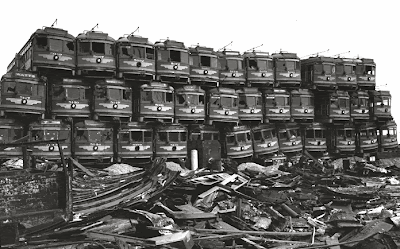Right now, we have a rising population and land that is getting harder to farm. Could the solution to this food crisis be an overhaul of the
composition of dirt?
I live in the East Bay in California, and we've been in a severe drought. I went back to visit my family in Washington, DC and it rained practically every day.
I loved the warm rain and the drama of the thunderstorms, but was definitely caught off guard to experience such different weather from the place where I grew up.
Places that were wet are becoming wetter, and places that were dry
are becoming drier, generally. Still, these patterns are wildly
unpredictable. The effects of more greenhouse gases in the
environment are not immediately felt, and are not uniform across
spaces. As the concentrations of CO2 and other gases increase,
weather patterns can shift dramatically. Our climate is changing, but it is difficult to know how it will settle.
A Dirty Solution
Farmers in Southern California have been told they will receive
between
25-40%
of their regular allotment of water this growing season because
of the drought.
Biotech corporations like Monsanto have responded to these
droughts by creating genetically modified (GMO) crops that require
less water. However, these crops will do
poorly
in wet environments, forcing farmers to divine the weather when
choosing seeds.
There may be an invisible solution to these uncertainties. Farming
has always been a collaboration between farmer and the soil – a
vast community of microbes- to create new life.
Scientists
have only recently been able to understand the microbial community,
called the “agribiome,” with low-cost DNA sequencing and other
advances. They are finding that microbes are instrumental in the
health of every plant. Changing the location of these
microbes could allow crops to adapt to climate change.
Scientists have been studying the microbes that allow other
plants to survive in extreme conditions. There is an amazing pair of
organisms that can survive in high and low temperature extremes,
salinity, and drought around the thermal pools of Yellowstone. When
the fungus (
Curvularia protuberata)
is infected with a heat-tolerant virus and grows together with
symbiotic plants such as panic grass, they can survive temperatures
of 150 degrees Fahrenheit.
There are many other types of microbes
that allow for healthier plants. These microbes could be isolated and
given to farmers around the world to help food survive.
Potential Risks/Benefits
Plants already depend on a complex
system of microbes to survive. With this solution, we are changing
the external environment rather than the internal genetic structure,
so this solution is arguably less invasive than GMOs.
Still, like GMOs, its ultimate
consequences are unknown. Generally, there are problems of
introducing new organisms into an ecosystem; the new microbes may
out-compete the other microbes in the agribiome and take over,
reducing biodiversity overall. However, this may end up benefiting
wild plants, which could also better survive the inconsistent
conditions of climate change. Microbial gel needs to be thoroughly tested in different places to demonstrate long-term and cumulative effects.
While I normally do not support "green" products or technology that goes against natural systems, I believe that the problem that these microbes can solve is dire enough to warrant its use.
The potential benefit of introducing
microbes cannot be underestimated. Human population continues to expand, and it is estimated that climate change will cause hundreds of millions of people to become water stressed by the year
2030. The most impoverished people will suffer the most, and it is a tragedy. It is a tragedy that people are dying and will die of starvation because of the extremely
skewed distribution of wealth and a lack of compassion for low-income people. If poor
farmers around the world gained access to these microbes, it could save lives.
Unfortunately, spreading these microbes
has been reliant on the shitty distribution of scientists, a group of
people who seem to be more concerned about one-upping each other
“advances” than actually spreading them. Furthermore, many of the
fungal/bacterial gels on the market are not regulated and are not effective. Educating farmers around the world about how to use these
microbes and which ones are effective is a monumental challenge- but
the pay-off could not be higher.



